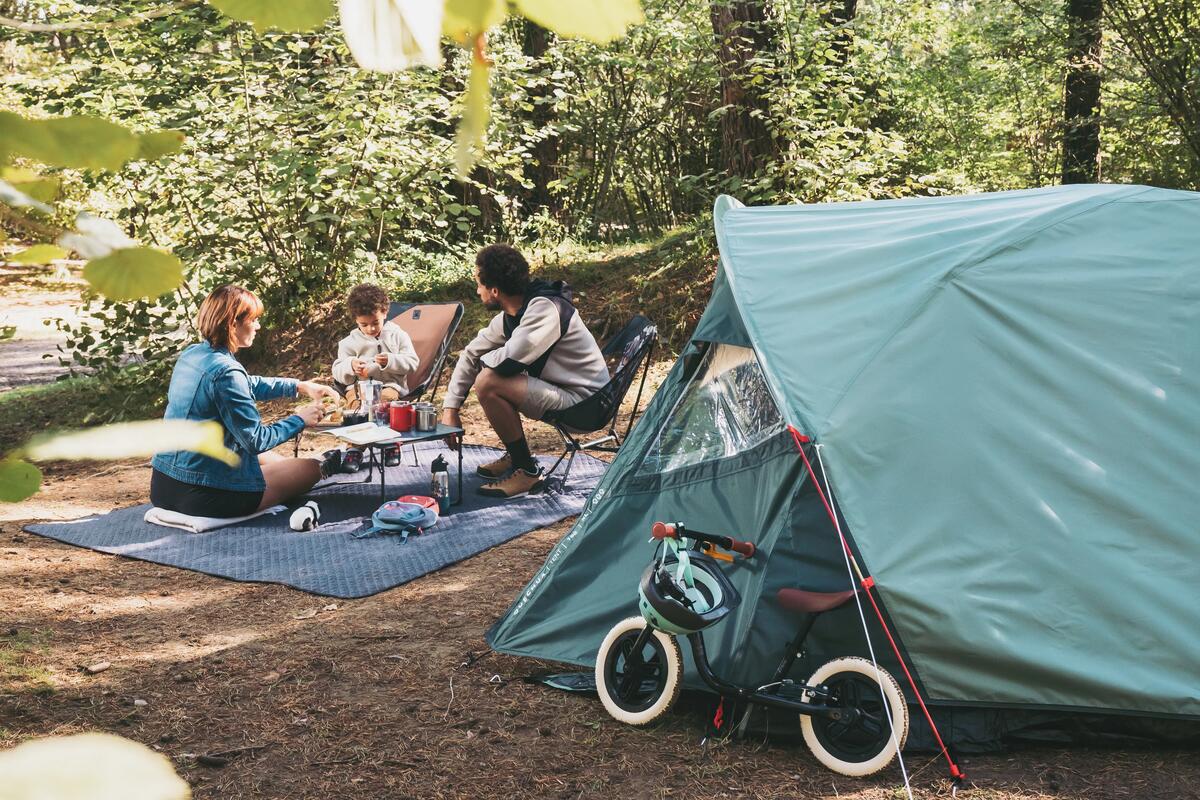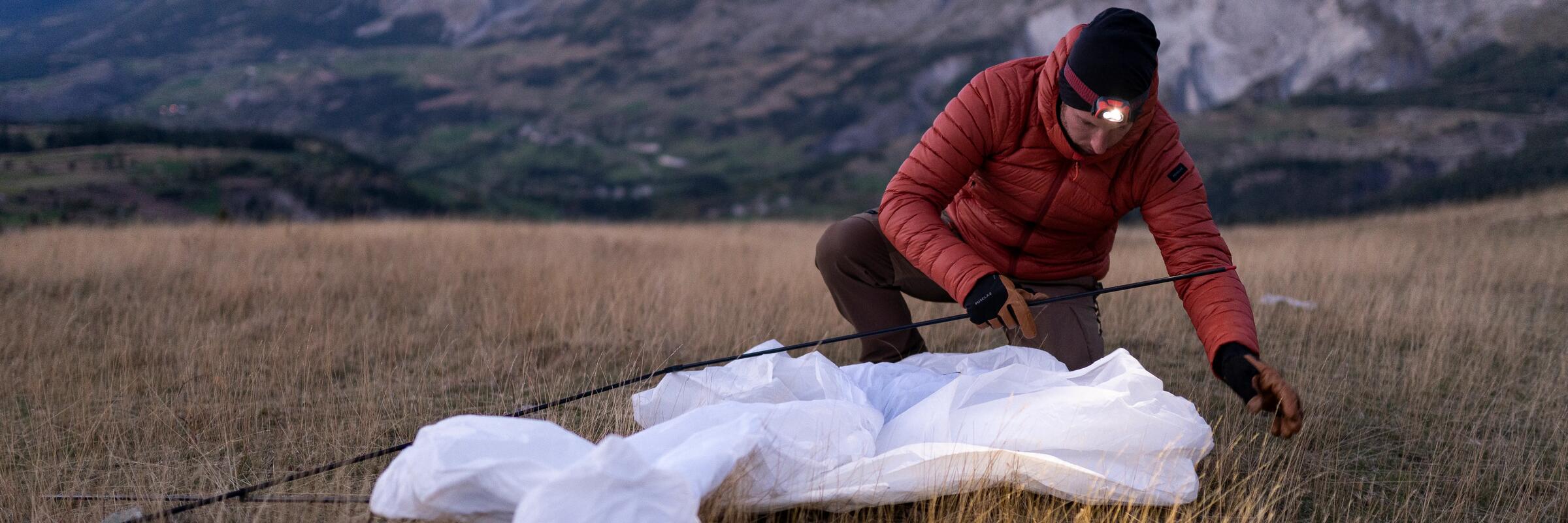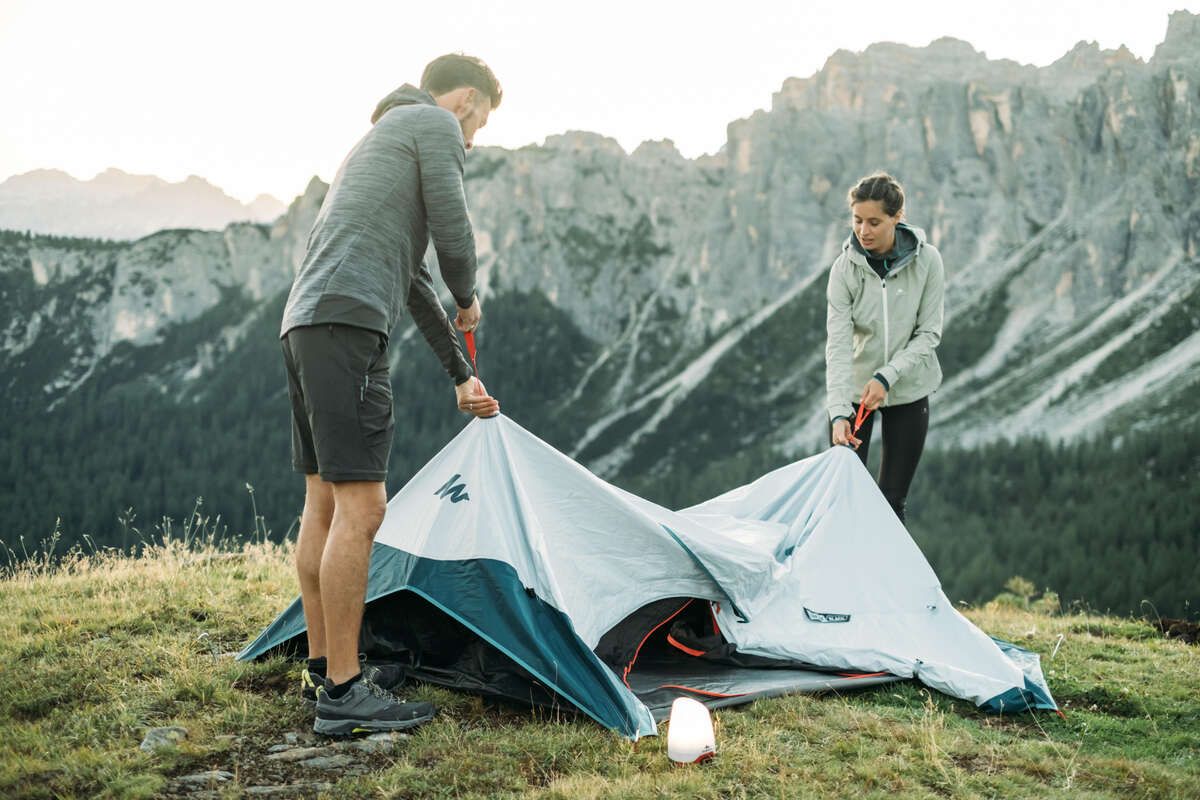
How to choose the right camping spot?
Camping, whether it's a 4-star version or in the heart of nature, what an adventure it is! To ensure everything goes smoothly, it's best to master the basics. While some elements allow for improvisation, others require a bit of preparation. The choice of the right spot, for example.
Being dislodged by the police at 4 a.m. (#truestory) because you were tempted to try wild camping or getting wet because you could not resist the urge to pitch your tent near a lake is not the best of experiences. But, let's stay positive — here's some practical advice to help you avoid these kinds of inconveniences.
When you have the basics, camping is all about happiness!
How to choose the right spot for my tent in a campsite?
It's decided, this summer we're camping, version 4 stars, well equipped and all comfort, with water park and children's club.
How about the beach or seaside? We’re going to be killjoys again, as we don’t recommend this option either. Why? Because camping on the beach is forbidden in quite a few countries, and also because the sand gets in everywhere. And nobody wants to hear you complaining about sand getting in your pyjamas.
Rule n°1: avoid the entrance to the camp site, so you’re not disturbed by the comings and goings of other campers. Being close to restaurants and activities, often right at the gates of the camp site so you have easy and direct access to all of the available services, also contributes to overall noise. If you're in search of silence, these are not the best places.
Rule n°2: take a good look around. If the aim of your trip is rest & relaxation, pitching a tent next to a holiday camp group, big playing field, or a large family is probably not the best idea. To avoid complaining about noisy neighbors, we advise you to ask for a quiet spot when booking.
Rule n°3:with or without electricity? Most campsites offer spots with electricity. If this is a non-negotiable for you, be sure to inquire about availability before booking.
Some campsites even offer a Wi-Fi connection!
Rule n° 4: adapt the size of the spot to the size of the family. Camping with children? Opt for spacious pitches, as your little ones will definitely want as much space as possible. They’re going to bicker sometimes about how cramped the tent is inside (don’t say we didn’t warn you...😁), so it’s best to give them plenty of space when they’re outdoors. Also, to keep them entertained, be prepared to take advantage of the activities offered: mini-golf, water slides and even kids’ clubs are all great ways to ensure they have an unforgettable stay!
With young children, the proximity of sanitary facilities and a baby area is another important factor that should not be overlooked. A 15-minute walk away when it’s the 12th pee of the day starts to lose its appeal pretty quickly.

Rule n° 5: don't forget the basics — the ground and the sun. In general, the ground and spots at campsites are suitable. They are flat, ready to accommodate small tents for duos or large family tents. However, nothing stops you from walking around the site to check that nothing is lying around before planting your pegs. It would be a pity to sleep on a big rock and campsites often offer different types of pitches, something to satisfy all campers.
When it comes to the sun, it's up to you to adapt to the weather. If it's very hot, set up your tent in a shady spot.
Ps: do you ask yourself "How to avoid condensation in my tent?", check out our tips here.
Where to pitch my tent in bivouac?
Before launching our series of tips, let's review the basics: the difference between wild camping and bivouac. For wild camping, we set up camp for several days, while for bivouac, we usually plan to stop only for one night.
Whatever your choice, wild camping or bivouac, the right attitude before leaving is to learn about the regulations of the country in order to know which practices are authorized and in what context.
Once you know all's legal, here are some rules to follow.

Rule n°1: if the country where you're on holiday allows bivouac or wild camping, make sure you are not on private property or protected land, even if you're in a natural park. For that, in addition to general information about the country, remember to check the website of the region or municipality. We don't want to panic you, but in some cases, the penalties can be severe..
Rule n°2: the quality of the ground is essential. There, it's not the same as on a campsite. You need a little observation to find the right ground before pegging your tent. What is the ideal terrain? Flat ground, because sleeping head downwards, or rolling to the right and then to the left because the ground isn't flat, is not fun. It must also be cleared of stones and branches that could interfere with your comfort or damage your tent. Let’s start with a bit of tidying up before setting things up. And to optimise your outdoor hotel: a lightweight, self-inflating floor mat or mattress. No, we didn't plan to bring the pump to inflate it!
Our advice: start looking for a place to sleep before nightfall.
View Self-inflating Mattresses
Rule n°3: beware of still waters. We recommend choosing a place close to water, but not too close. For several reasons: the possibility of flooding if it rains, the presence of mosquitoes, the risk of condensation inside your tent, and herds of animals drinking in the early morning hours. There have to be other reasons to convince you that this magnificent lake may not be the best of spots!
Rule n°4: a nap under the shelter of a tree? OK, but not with your tent. For two good reasons. The first is the risk of a branch falling on your tent if it's windy. The second: resin, especially pine resin, is not your tent's best friend.
Another tip: if you don't like bees and other flying insects, avoid being near flowering bushes.
Rule n°5: always sheltered from the wind. One of the main drawbacks of bivouac is the wind. To sleep without being too shaken up, we recommend opting for a well sheltered spot (not under the trees, but you already know that!) and securing the tent pegs well. A little bit of wind won't hurt. It can help avoid condensation inside your tent by impoving airflow.
Our tip: position the entrance facing away from the wind.
Rule n°6: be aware of natural hazards. You should avoid pitching your tent under a cliff due to the risk of a landslide. The danger of falling rocks is something to keep in mind, especially when you bivouac in the mountains.

Rule n°7: the sun does not set in the same place it rises. Yes, if you pitch your tent in the sun, you might wake up in the shade. If the temperatures are low, choose a spot where the sun will heat the tent up in the morning. Also, avoid pitching your tent in the middle of the afternoon, as it can get damaged faster from UV rays.
So that you don't get cold, take along a sleeping bag adapted to the temperature. Of course, lightweight is a good idea, since you'll be carrying it and you don't want to be burdened with something too heavy. Good idea: a nice, warm featherweight down, especially if you're going up in altitude.
View Sleeping Bags
Rule n°8: last but not least, it's important to respect the environment. We leave the site as clean as we found it. Leaving behind your waste is not an option. And if you're tempted to have a fire, because it looked cool in a show, it's a definitive no! We’re sure you don’t want to attract animals or start a forest fire!
A good idea to find the ideal spot is to connect with groups of bivouac enthusiasts on social media, but also on forums. Often, they prefer to keep these places secret, but once trust is gained and passion is shared, they will be happy to share their tips with you.
You are now ready for your holiday, whether in a campsite or out in nature .Three final points:
- Always follow safety guidelines
- Respect the environment
- Make sure you're properly equipped (backpack, hammock, cooler, sleeping bag, mattress...)